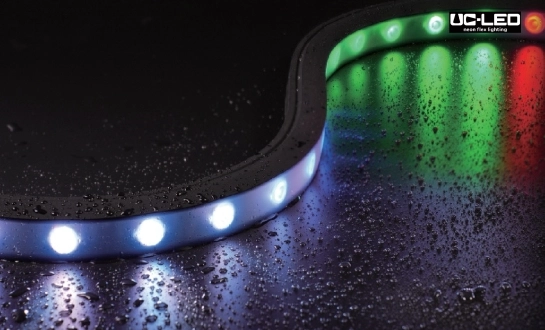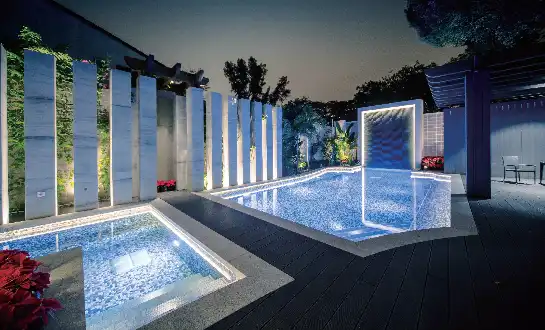DMX Control in Architectural Lighting: A Complete Guide
DMX control in architectural lighting revolutionizes the way we illuminate buildings and spaces. This comprehensive guide explores the intricacies of DMX (Digital Multiplex) technology and its application in architectural illumination. From enhancing facades to creating dynamic interior atmospheres, DMX control offers unprecedented flexibility and precision in lighting design. We'll delve into the technical aspects, practical applications, and creative possibilities that make DMX a cornerstone of modern architectural lighting solutions. Whether you're a lighting designer, architect, or property owner, understanding DMX control is crucial for achieving stunning, responsive, and energy-efficient architectural illumination.

Grasping DMX Protocol in Architectural Lighting
The Basics of DMX512 Protocol
DMX512, commonly referred to as DMX, stands as the industry standard for digital communication networks in lighting control systems. This robust protocol, initially developed for stage lighting, has found its way into architectural illumination due to its versatility and reliability. DMX operates by transmitting digital signals from a controller to lighting fixtures, allowing for precise manipulation of various parameters such as intensity, color, and movement.
In architectural applications, DMX enables lighting designers to create dynamic and responsive environments. The protocol's ability to control up to 512 channels per universe makes it ideal for managing complex lighting setups in large-scale architectural projects. This level of control is particularly valuable in creating seamless color transitions, intricate lighting patterns, and synchronized effects across entire building facades or interior spaces.
DMX Controllers and Their Role in Architectural Lighting
DMX controllers serve as the brain of architectural lighting systems, orchestrating the behavior of connected fixtures. These devices range from simple handheld units to sophisticated computerized systems capable of managing entire building lighting networks. Advanced DMX controllers often feature intuitive interfaces, allowing lighting designers to program complex scenes, schedule lighting changes, and even integrate with other building management systems.
In architectural settings, DMX controllers play a crucial role in energy management and sustainability efforts. They enable the implementation of daylight harvesting techniques, where artificial lighting adjusts automatically based on available natural light, significantly reducing energy consumption. Furthermore, these controllers facilitate the creation of lighting scenes that can enhance the aesthetics of a space while meeting functional requirements, such as adjusting light levels for different times of day or specific events.
DMX Addressing and Universe Management
Effective DMX addressing is fundamental to successful architectural lighting control. Each fixture in a DMX system is assigned a unique address, allowing the controller to send specific instructions to individual units. In large-scale architectural projects, proper addressing becomes critical to manage hundreds or even thousands of fixtures seamlessly.
Universe management adds another layer of complexity and capability to DMX-controlled architectural lighting. A DMX universe refers to a group of 512 channels, and modern systems can handle multiple universes simultaneously. This multi-universe capability is essential for extensive architectural illumination projects, such as skyscrapers or large public spaces, where the number of controllable parameters far exceeds the capacity of a single universe.
Implementing DMX in Architectural Lighting Design
Planning and Design Considerations
Implementing DMX in architectural lighting design requires meticulous planning and consideration of various factors. The process begins with a thorough assessment of the architectural space, including its structure, purpose, and aesthetic goals. Lighting designers must consider the placement of fixtures, cable routing, and potential interference sources that could affect DMX signal integrity.
During the design phase, it's crucial to select DMX-compatible fixtures that align with the project's objectives. This selection process involves evaluating factors such as luminous output, color rendering capabilities, beam angles, and energy efficiency. The integration of DMX control also allows for future-proofing the lighting design, as it provides the flexibility to update and modify lighting schemes without significant hardware changes.
DMX Network Topology and Signal Distribution
The topology of a DMX network in architectural lighting is a critical consideration that impacts system reliability and performance. Common topologies include daisy-chain, star, and hybrid configurations. Each has its advantages and limitations, and the choice often depends on the specific requirements of the architectural project.
Signal distribution in large-scale architectural illumination projects often requires the use of DMX splitters and repeaters. These devices ensure signal integrity over long distances and allow for the creation of complex branching networks. In some cases, wireless DMX solutions may be employed to overcome physical limitations or to simplify installation in challenging architectural environments.
Integration with Building Management Systems
Modern architectural lighting control extends beyond standalone DMX systems. Integration with building management systems (BMS) is becoming increasingly common, allowing for cohesive control of lighting alongside other building functions such as HVAC and security. This integration can lead to enhanced energy efficiency, improved occupant comfort, and streamlined facility management.
Advanced DMX controllers can interface with BMS through protocols like BACnet or Modbus, enabling centralized control and monitoring of the entire lighting system. This level of integration supports sophisticated automation scenarios, such as adjusting lighting based on occupancy patterns or environmental conditions, further enhancing the functionality and efficiency of architectural illumination.
Creative Applications and Future Trends in DMX-Controlled Architectural Lighting
Dynamic Facade Lighting and Media Architecture
DMX control has revolutionized facade lighting, transforming buildings into dynamic canvases for light and color. Architects and lighting designers now have the tools to create ever-changing lighting displays that can reflect the time of day, seasons, or special events. This capability has given rise to the field of media architecture, where buildings become interactive displays capable of conveying information or artistic expressions through light.
Advanced DMX-controlled systems enable pixel mapping on building facades, allowing for the creation of low-resolution video content across large architectural surfaces. This technology has been employed in iconic projects worldwide, turning ordinary structures into extraordinary landmarks that captivate audiences and redefine urban nightscapes.
Responsive and Interactive Lighting Installations
The integration of sensors and real-time data with DMX-controlled lighting systems has paved the way for responsive and interactive architectural illumination. These installations can react to various stimuli such as movement, sound, or environmental conditions, creating immersive and engaging experiences for occupants and passersby.
Interactive lighting installations in public spaces, for instance, can respond to pedestrian traffic patterns, creating dynamic pathways of light. In corporate environments, DMX-controlled lighting can adjust based on occupancy or time of day, enhancing workspace comfort while optimizing energy usage. The possibilities for creative applications are virtually limitless, limited only by the imagination of designers and the capabilities of the DMX system.
Emerging Technologies and Future Directions
The future of DMX control in architectural lighting is closely tied to advancements in LED technology, IoT integration, and artificial intelligence. As LEDs become more efficient and capable of producing a wider range of colors and color temperatures, DMX systems will be able to create even more nuanced and sophisticated lighting effects.
The Internet of Things (IoT) is set to play a significant role in the evolution of architectural lighting control. DMX systems integrated with IoT platforms will enable remote monitoring, predictive maintenance, and data-driven optimization of lighting performance. Furthermore, artificial intelligence and machine learning algorithms could revolutionize how lighting responds to environmental factors and human behavior, creating truly adaptive architectural illumination solutions.
Conclusion
DMX control has undeniably transformed the landscape of architectural illumination, offering unprecedented levels of creativity, flexibility, and efficiency. As technology continues to evolve, the possibilities for innovative lighting design in architecture are boundless. For those looking to explore cutting-edge DMX-controlled lighting solutions for their architectural projects, QUAN HE Lighting Co., Ltd. offers a range of advanced products and expert guidance. To learn more about how DMX control can elevate your architectural lighting design, contact us at Linda@uc-led.com.
References
1. Smith, J. (2022). "Advanced DMX Control Systems in Modern Architecture". Architectural Lighting Review, 45(3), 78-92.
2. Johnson, A. & Lee, S. (2021). "Integration of DMX Lighting with Building Management Systems". Journal of Intelligent Buildings, 18(2), 205-219.
3. Garcia, M. (2023). "The Evolution of Facade Lighting: From Static to Dynamic DMX-Controlled Displays". Urban Design International, 28(1), 33-47.
4. Williams, R. et al. (2022). "Energy Efficiency in DMX-Controlled Architectural Lighting: A Case Study". Sustainable Architecture and Building Design, 9(4), 412-428.
5. Chen, L. & Patel, N. (2023). "Future Trends in Architectural Lighting: IoT, AI, and Beyond". Smart Cities and Buildings Journal, 7(2), 156-170.

Looking for high-quality LED flexible strips? Click for a free quote in 24 hours!

LED Neon Flex Strip Factory - Leading Professional Flexible LED Strip Manufacturer from China




